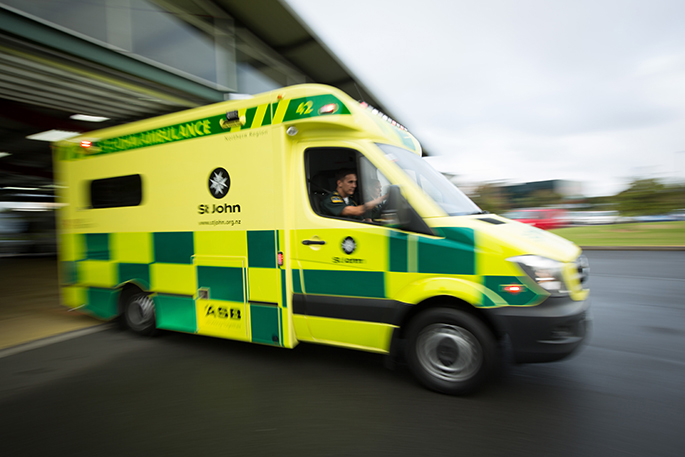St John has released emergency workload statistics for 2019 confirming the number of emergency ambulance responses continues to climb.
Every year the demand for ambulance services increases by approximately four per cent and in 2019 St John responded to over 440,000 incidents, almost 18,000 more than 2018.
St Johns operations director Norma Lane says the top five reasons an ambulance was called were referrals by GPs, falls, breathing problems, chest pain and people unconscious or passing out.
'While this is consistent with previous years, there are some notable trends coming through.”
Calls for mental health related incidents increased by 10 per cent in 2019, a statistic consistent with current trends globally and nationally. The group with the largest increase was those aged 70-79, but the number of males calling for mental health reasons also increased, and they now make up 47 per cent on all mental health call outs, up from 39 per cent in 2018.
'In the last six months we have responded to nearly 20,000 people who are in some form of mental health crisis,” says Norma.
Traumatic injuries also continue to rise, up 14 per cent from 2018 and 22 per cent from 2017, and Maori and Pacific people with these injuries are likely to be younger and in higher areas of deprivation than other ethnic groups.
Over 10,000 people needed an emergency ambulance response for stroke-related incidents, up nearly 12 per cent on the previous year.
Norma says that in addition to the increasing number of responses, ambulance officers are attending more complex cases with patients who have multiple health issues, and this is one reason job cycle times have increased by nearly six per cent in the last two years.
'It can take time to stabilise and treat patients with serious and complex conditions, meaning ambulances are not available to respond as quickly to the next call.”
Despite the challenges faced by the emergency service, St John has worked hard to improve outcomes for patients and safety for ambulance officers and is in year three of a four-year programme to fully crew all ambulances.
'Ambulances are now fully crewed 97 per cent of the time and we are on track for all ambulances being double crewed in 2021,” says Norma.
Calls into the St John 111 Communications Centres in Auckland and Christchurch also increased with St John call handlers answering over half a million calls, and 46,000 more calls than in 2018. 92 per cent of ambulance 111 calls are answered immediately, and 95 per cent within 15 seconds.
Norma says St John is continuing to focus on providing the most appropriate response for the situation as quickly as possible, and if the problem is life-threatening or critical an ambulance will be sent immediately, however if the problem is not urgent there may be a delay in getting an ambulance to you.
"We continue to meet our response time targets for the most critical cases; however, the higher workload, increasingly congested roads and longer treatment and handover times has impacted the availability of ambulances."
Not all calls into the 111 emergency call centre require an ambulance however, and Norma says St John clinicians will help determine what care is best. That could be self-care, referral to a GP, referral to a private accident and medical centre or an alternative vehicle to treat the patient at home.
"A lot of work is being done to take pressure off the wider health system, and in 2019 170,000 incidents resulted in people being treated at home, given advice over the phone or directed to more appropriate care by our clinicians, rather than presenting at hospital emergency departments."
"It is important that in the changing landscape we continue to innovate to provide the best possible care for New Zealanders."



0 comments
Leave a Comment
You must be logged in to make a comment.